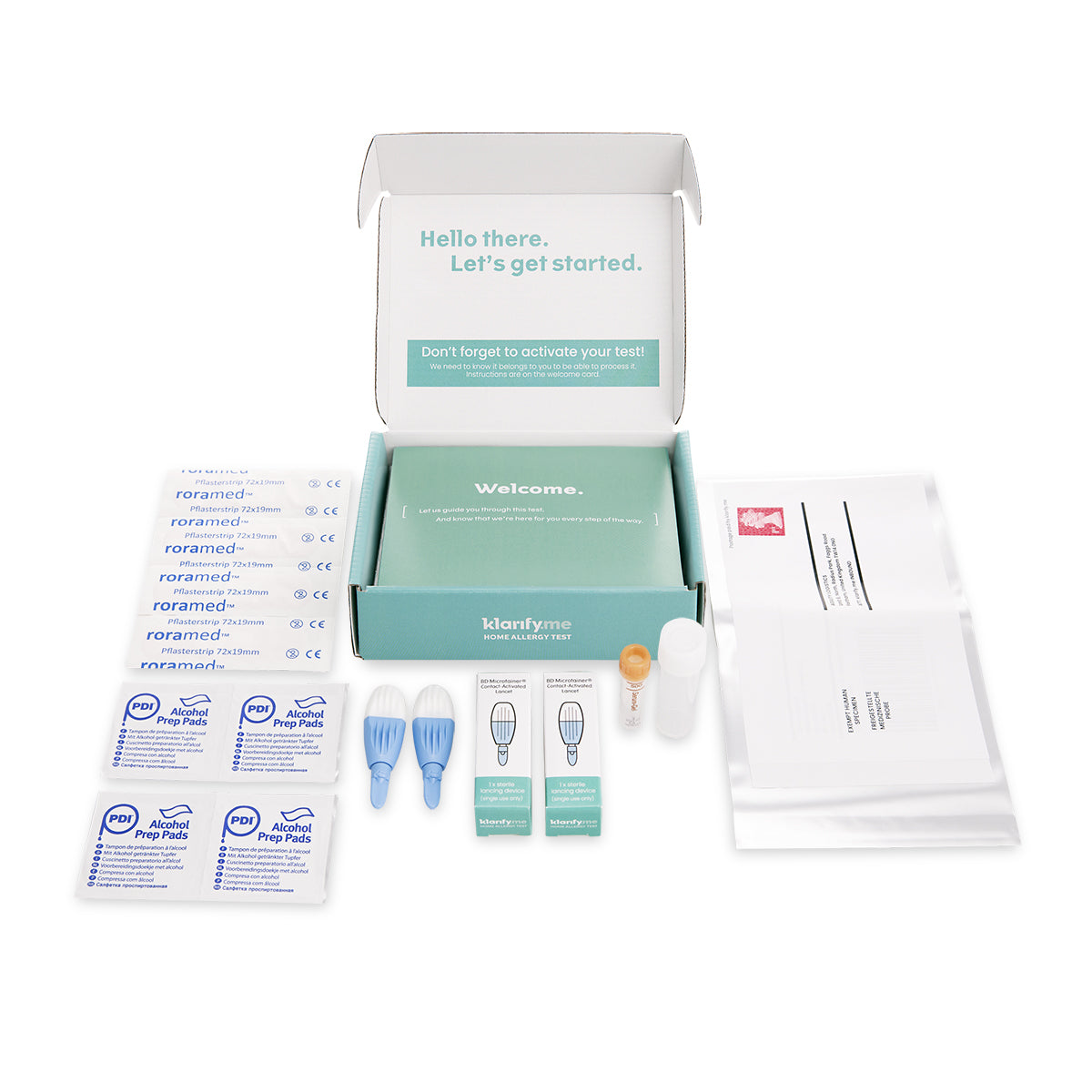[Ad]
Determining whether you have a gluten sensitivity can be difficult. Here's how to easily detect a gluten sensitivity, gluten sensitivity symptoms and what your next steps should be if you suspect you have issues with gluten.
How to easily detect a gluten sensitivity
When it comes to having to avoid gluten in your diet, there are a number of conditions that could be the culprit. The one that I am most familiar with is the autoimmune disorder Coeliac Disease. However, people who suffer from gluten or wheat allergies, intolerances and non-celiac gluten sensitivity also tend to follow a gluten-free lifestyle.
Gluten intolerance is characterised by adverse reactions to gluten, a protein found in wheat, barley and rye. As stated, Coeliac Disease (or Celiac Disease) is the most severe form of gluten intolerance and it affects about 1% of the population (NCBI). However, up to 13% of people may also have non-celiac gluten sensitivty, a milder form of gluten intolerance that can still cause problems both related to and unrelated to digestion (NCBI).
Gluten and issues resulting from consuming gluten are more mainstream than ever before. Thanks to increased campaigning, the rise of gluten-free processed foods and the popularity of low-carb diets that heavily rely on gluten-free recipes, more and more people are aware that gluten found in wheat, rye and barley can be an issue for some of us.
One of the reasons gluten intolerances and issues go unnoticed is that they can be difficult to detect. This is because the common symptoms of a gluten sensitivity tend to mimic other mild gastrointestinal issues. Most of us aren't in the habit of seeking medical advice for every upset stomach we have, for instance. Take a look at these common symptoms of gluten sensitivity or intolerance.
14 Most Common Signs of Gluten Intolerance
If you suspect you might have a gluten intolerance, look out for these symptoms:
- Bloating
- Diarrhoea, Constipation and Smelly Faeces
- Abdominal Pain
- Headaches
- Feeling Tired
- Skin Problems
- Depression
- Unexplained Weightloss
- Iron-Deficiency Anaemia
- Anxiety
- Autoimmune Disorders
- Joint and Muscle Pain
- Leg or Arm Numbness
- Brain Fog
Things can get a bit confusing when you realise that the symptoms for gluten sensitivity are the same as those for gluten intolerance. Here's what you need to know about the distinction between the two: Coeliac Disease is an autoimmune condition that affects multiple systems in the body but its prime target is the digestive tract. Gluten sensitivity implies that some immune reaction occurs when a person eats gluten.
What really differentiates the two is intestinal damage. Coeliac Disease is gluten sensitivity with intestinal damage. Gluten sensitivity does not have have intestinal damage.
Tracking Your Gluten Intolerance Issues
In a separate section you also want to record any symptoms you experience after eating or drinking items that contain gluten. Symptoms can manifest as soon as 20 minutes after consumption to days since. The key here is training your brain and body to recognise the symptoms and not to just write them off as being normal 'twinges'. Try to keep your log for two weeks, noticing any patterns that emerge.
Taking an At-Home Allergy Test for Gluten Sensitivity
Recording everything you eat for a fortnight won't be easy. As you get busy through the week you're likely to slip up, forget to record a meal or miss the ingredients on a packet before its binned. An alternative solution for easily detecting a gluten sensitivity is by conduting an at-home allergy test.
In my early days of suspecting I had problems with gluten, I took an at-home allergy test similar to the one Klarify.Me provides. Being able to take the test from the comfort of my home was appealing to me because it meant I didn't have to try to juggle an extra GP appointment into my schedule. It is worth pointing out that after you have received the results of your at-home allergy test, you will need to make an appointment with your doctor so that they may interpret the results alongside your symptoms and medical history. Your doctor will also be able to advise you of any follow-up actions to diagnose and treat you.
Performing the at-home allergy test before you contact your GP will give you a rough idea of any allergens you may have. The Klarify.Me test screens you for over 280 different allergens including pollen, pets, mites, insect stings, moulds and yeats, food and other allergens.
The food and food groups that the Klarify.Me Home Allergy Test screens for are:
- cereals and seeds
- egg
- milk
- fruit
- legums and nuts
- seafood
- spices
- meat and
- vegetables
After you receive your results from the Home Allergy Test, you'll need to take them to your GP to have them interpreted and to receive advice about the next steps and to receive a diagnosis.
Just starting out on your gluten-free journey?
Discover where to eat gluten-free in the UK.
If you liked this information, you may want to check out my Coeliac Info filled with tips for transitioning to a gluten-free lifestyle.

Disclaimer: I have received compensation for this post. You can review my privacy policy here to understand more about the types of compensation I receive.















No Comments Yet, Leave Yours!
Post a Comment
What do you think of this recipe? Be sure to tag me in any recipes you make on social media and use #anyonitanibbles!